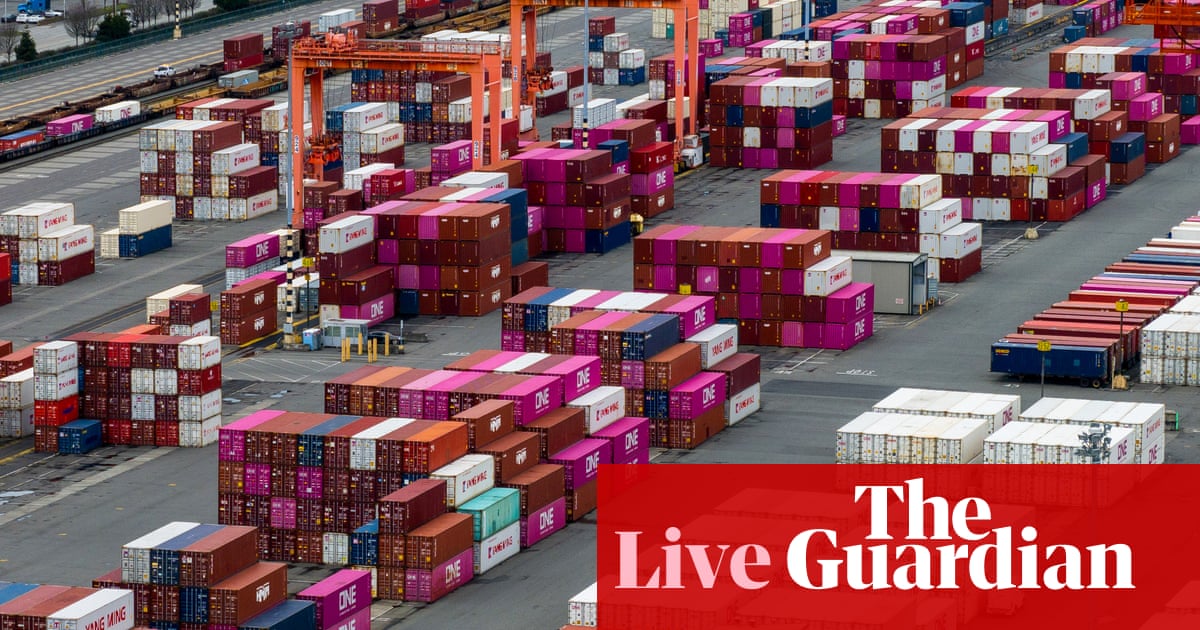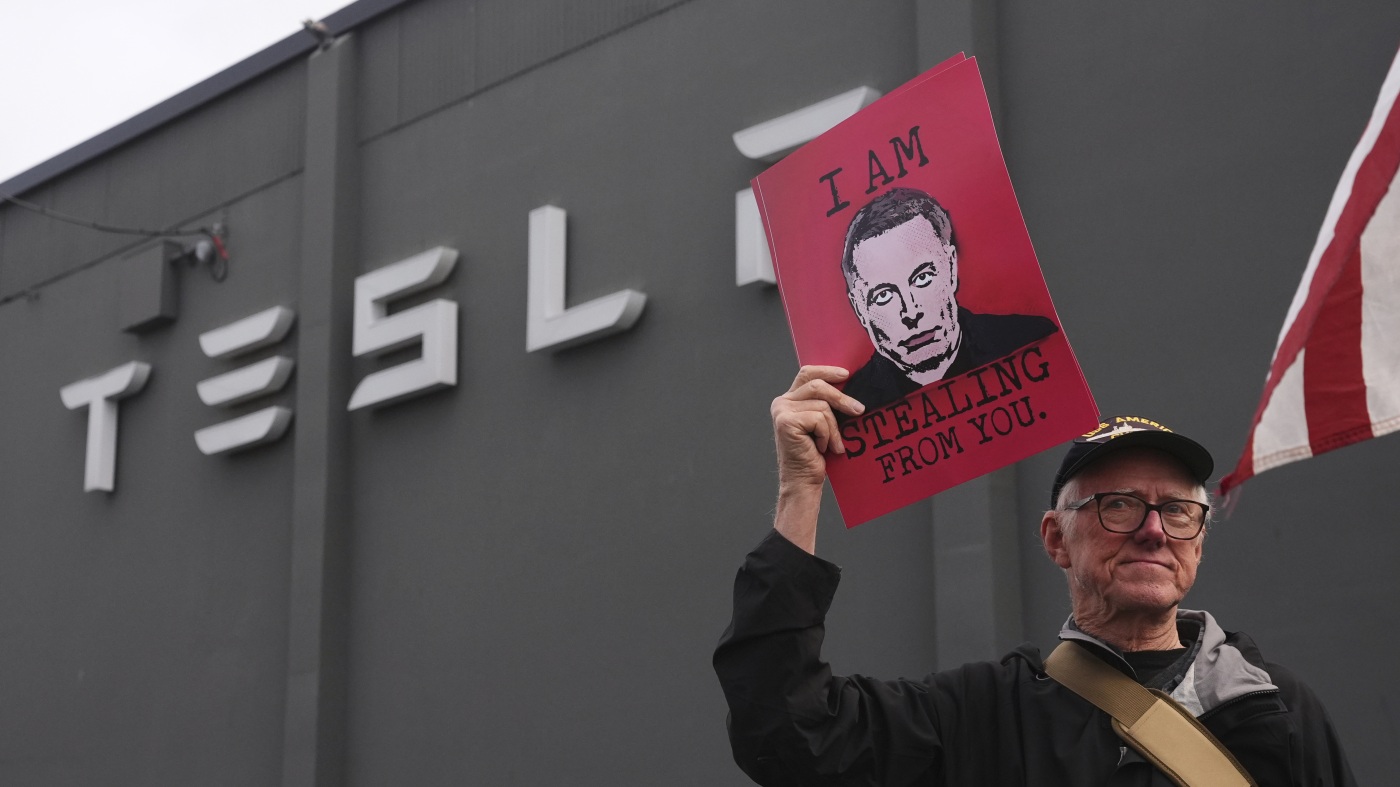
Trump’s ‘liberation day’ tariffs: what to expect and will the UK be spared?
The EU and the UK are bracing for a damaging trade war with the US, as Donald Trump is expected to implement his threat to impose tariffs on imports from Europe.
For weeks, he has named 2 April “liberation day”, with the unveiling of a tariff plan to reverse what he called “unfair practices that have been ripping off our country for decades”.
What tariffs are expected?
A 20% blanket tariff on nearly all imports to the US has been drafted by Trump’s aides.
However, EU and UK leaders are concerned about the possibility of sectoral tariffs, as well as permanent levies he may impose to counter Europe’s VAT rates, which he considers a de facto tax.
Trump, who once challenged the then German chancellor Angela Merkel for not ensuring there were more Chevrolets in Munich, has already announced tariffs on cars starting on 3 April.
Will the UK be spared?
The relative warmth Trump showed Keir Starmer in the Oval Office last month is unlikely to protect the UK, with tariffs expected on “all countries”. However, the UK has been racing to agree a deal, with the business secretary, Jonathan Reynolds, suggesting that if any country can secure a carve-out, Britain could.
On Tuesday, Starmer said businesses did not want a tit-for-tat war. Instead of a “kneejerk” reaction, he would respond in a “calm and collected” manner.
He hoped a trade deal, something that eluded a succession of UK governments over decades, would “mitigate” the impact of tariffs. The UK was this time seeking a much narrower “economic prosperity deal” rather than a more comprehensive “free trade agreement”.
Although this would be far less expansive in scope, the hope is that it should be quicker to agree.
Does Trump really hate Europe?
European leaders were alarmed by the attacks on Europe by the vice-president, JD Vance, but Trump has been notably less visceral, confining his interests to defence and the trade imbalance.
He has complained that the US was “ripped off by every country in the world” and that he was “not happy with the EU” as a place to do business. His exclusion of the EU in talks over Ukraine has ruptured the higher-level geopolitical transatlantic relationship.
How will the EU react?
Strongly. The EU has already announced a string of tariffs it plans to introduce on US imports targeting steel and aluminium in kind, as well as textiles, leather goods, home appliances, house tools, plastics and wood.
Sources say it is also considering nuclear options, including tariffs on revenues generated in the EU by big tech firms and social media.
This could be seen as highly provocative and would put Trump’s allies, such as Elon Musk and Jeff Bezos, in the crosshairs. It would also test the unity of the EU, with Ireland expected to argue against more punitive measures because of the dominance of the US tech sector in Dublin.
The EU’s preference is to negotiate so it has decided to delay countermeasures to open a space for talks. Maroš Šefčovič, the European commissioner for trade and economic security, has already met the US commerce secretary, Howard Lutnick, and, although Šefčovič reportedly came home last week “empty handed”, he is operating the Brexit playbook, hoping to build a personal relationship that will provide credit in the bank when they get down to talks.
One EU official said there was no point negotiating with the US at this stage, saying it would be like arguing over rotten fish.
“It is not very productive to now start negotiating about removing the tariffs,” the official said. “You put a stinking fish on the table, and then you start negotiating to remove that stinking fish, and then you say: ‘Wow, we have a great result: there’s no stinking fish on the table.’ That is not a very productive conversation.”
Trade experts also say negotiations with the US would involve agreeing a strategy between 27 different member states, which could be tricky given the potential for splits between countries, as EU states negotiate trade deals as a unified bloc.
What is Trump’s game plan?
Trump has been obsessed with tariffs since the 1980s, when he railed against the Japanese buying up real restate in the US, an open economy, but with US investors unable to reciprocate in Tokyo.
His goal is to reindustrialise the US and to repatriate jobs and taxes he thinks US companies should be paying at home rather than abroad. While currently at a 21% corporate tax rate, the US for a long time operated at a 35% corporate tax rate, pushing some of its biggest companies to push for lower taxes.
To revive local industry, Trump wants to shorten the supply chain and make sure more components are manufactured locally.
What does the data on trade show?
The US is the largest importer of goods in the world, buying $3tn-worth of products in 2023. Its largest trade deficit is with China, from where it imports $279bn more than it exports, followed by the EU at $208bn.
EU-US trade is worth €1.6tn but only three countries – Ireland, Germany and Italy – enjoy a surplus in goods trade.
Germany’s trade surplus in goods was €57bn in 2023, according to official US data. In 2023, Germany sold €144bn-worth of goods to the US, of which €22bn was on cars. By contrast, the US sold €87bn-worth of goods to Germany, including €8.25bn-worth of cars.
Ireland has the second-largest trade imbalance, a surplus of €50bn largely caused by the export of pharmaceuticals to the US from large US multinationals. But it has been consistently singled out by Trump and is seen as highly exposed.
Italy has a trade surplus of €41bn, selling about €65bn-worth of goods to the US. Packaged medicines and cars account for about €5bn and €4.66bn of all exports respectively.
The UK has a more balanced relationship with the US. The US is Britain’s largest single-export market, worth £60.4bn in goods in 2023, accounting for 15.3% of the global total. The UK imported £57.9bn in goods from the US.
How is business reacting?
The US markets are spooked, with S&P 500 and Nasdaq closing March trade with their worst quarter performance since Russia’s invasion of Ukraine in 2022.
The EU is presenting itself as a safe haven. “I do think investors at the moment are re-evaluating the EU and investing in the European Union. I think there’s a growing appreciation of the value of predictability and order on the global stage,” said Paschal Donohoe, Ireland’s finance minister.
So far this year, the pan-European Stoxx 600 index has gained 6.4%, while the US S&P 500 index has lost 5% and had its worst quarter since 2022.










